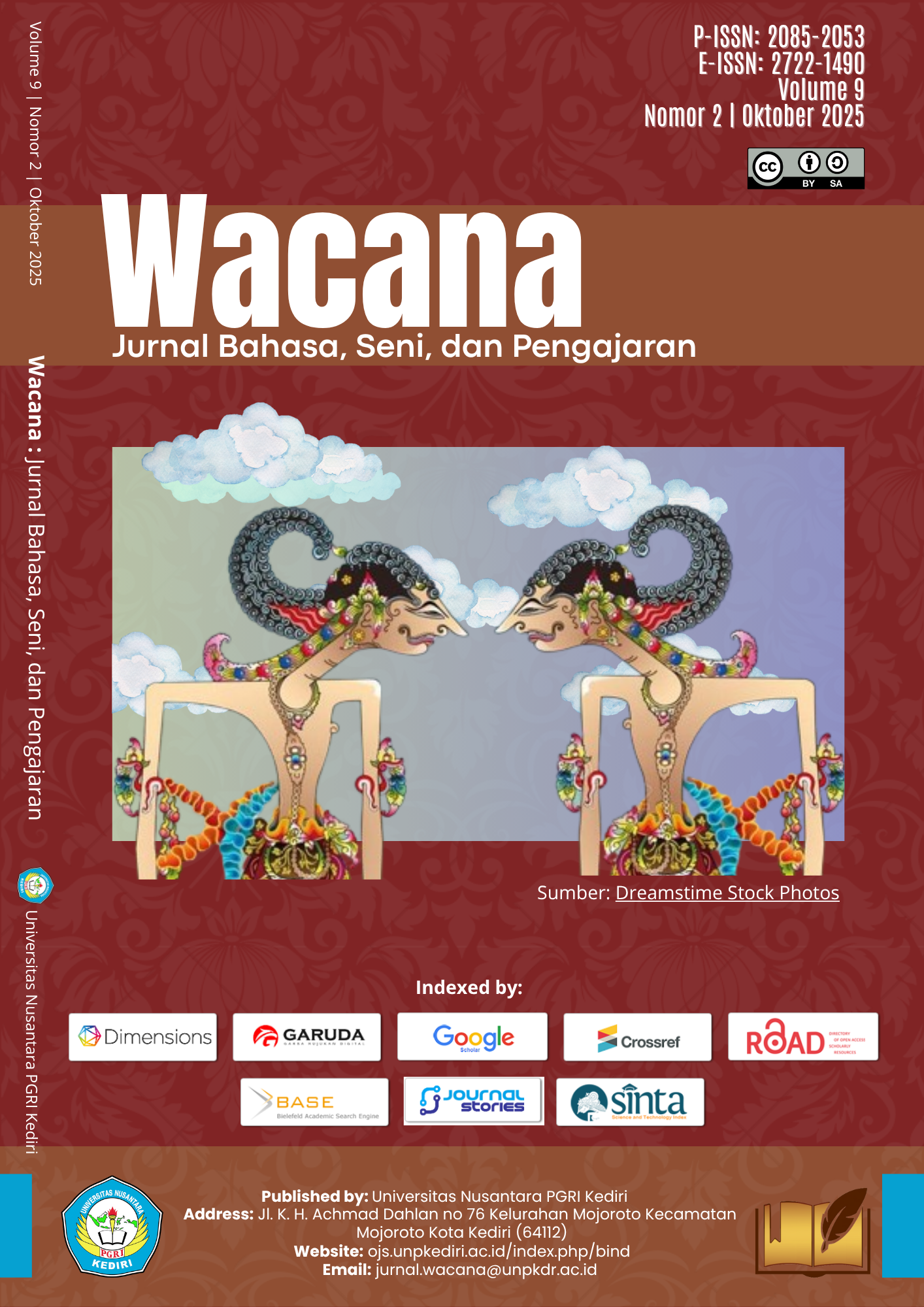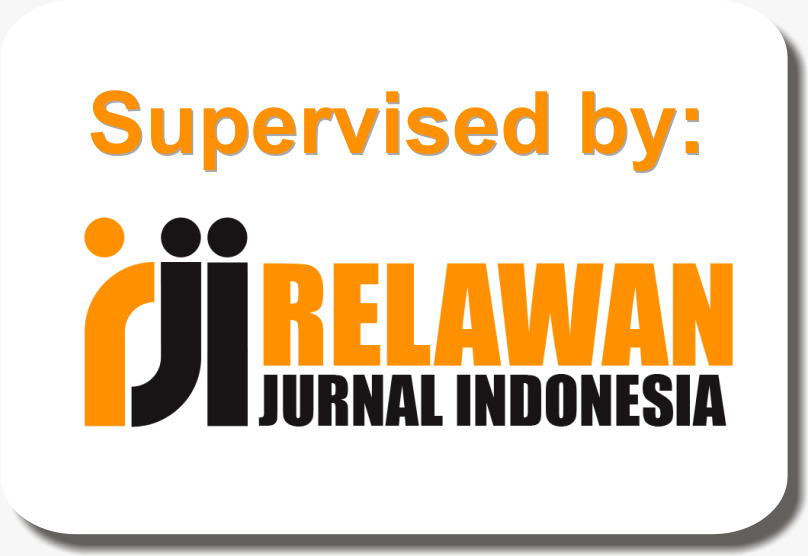The Semiotics of Online Loans in the Representation Discourse of Women on Instagram @herstory.co.id
DOI:
https://doi.org/10.29407/jbsp.v9i2.9Keywords:
discourse analysis, illegal, online loans, vulnerable, womenAbstract
News coverage regarding illegal online loans (Pinjaman Online or Pinjol) targeting women is a frequent topic encountered on the Instagram social media platform. This study discusses the discourse of online loans in the news coverage presented by the Instagram account @herstory.co.id. The research focuses on analyzing: (1) how Instagram @herstory.co.id presents the representation of women within the text, and (2) describing the textual strategies used to feature women in the interpretation of online loans within the media coverage. This is a qualitative study utilizing the Sara Mills Discourse Analysis method. The research subject is the social media account Instagram @herstory.co.id, and the research object is women entangled in online loans. The findings indicate that Instagram @herstory.co.id has not yet prioritized women in its news texts. The news writers at @herstory.co.id tend to position women in the text as objects, and there is a tendency for the author to position themselves from the perspective of the dominant power. The strategy for featuring women in the interpretation of online loans in @herstory.co.id's coverage is executed in three ways: character, focalization, and schemata. Overall, the Instagram social media account @herstory.co.id still largely represents the image of women in accordance with general patriarchal culture.
References
Abdullah, S. N. A. (2019). Analisis Wacana Sara Mills Tentang Kekerasan Perempuan dalam Rumah Tangga Studi Terhadap Pemberitaan Media Kumparan. Jurnal Dakwah Dan Komunikasi, 4(2), 101. https://doi.org/10.29240/jdk.v4i2.1236
Ayu, S. D., & Pratama, A. M. (2025, April 28). 1.944 Korban Pinjol Mengadu ke LBH Jakarta, Didominasi Perempuan. Kompas.Com.
Ayuningtyas, E. C., Rahmayantis, M. D., Sasongko, S. D., & Suhartono. (2022). Variasi Kata Sapaan dalam Akun Twitter @schfess. Wacana : Jurnal Bahasa, Seni, Dan Pengajaran, 6(2), 23–36. https://doi.org/10.29407/jbsp.v6i2.19120
Badara, A. (2014). Analisis Wacana: Teori, Metode, dan Penerapannya pada Wacana Media (Edisi Keempat). Kencana Prenada Media Group.
Budirahayu, T., Susanti, E., & Mas’udah, S. (2024). ulnerability of Poor Women to Social Disasters during the COVID-19 Pandemic. Journal of International Women’s Studies, 26(4).
Chumburidze, M., Setiabudi, E., Vassiliadou, M., Hasanov, R., & Duangpaserth, K. (2023). Unveiling the Complex Interplay Between Active Learning and Teacher Development: Insights from TIMSS 2022 in Georgia. Interval: Indonesian Journal of Mathematical Education, 1(2), 118–125. https://doi.org/10.37251/ijome.v1i2.1363
Creswell, J. W., & Poth, C. N. (2016). Qualitative inquiry and research design: Choosing among five approaches. Sage publications.
Eriyanto. (2006). Analisis Wacana Pengantar Analisis Teks Media. Lkis.
Fakih, M. (2013). Analisis Gender & Transformasi Sosial (T. Rahardjo, Ed.; Cetakan Kelima). Pustaka Pelajar.
Gopalakrishnan, L., Mulauzi, N., Mkandawire, J., Ssewamala, F. M., Tebbetts, S., Neilands, T. B., & Conroy, A. A. (2025). Effects of economic empowerment and relationship strengthening intervention on financial behaviors among couples living with HIV: The Mlambe pilot trial in Malawi. SSM - Population Health, 29, 101768. https://doi.org/10.1016/j.ssmph.2025.101768
Hasanah, U., & Wianti, N. I. (2024). Gender Harmony in Islamic Education: A Philosophical Perspective. Al Huwiyah: Journal of Woman and Children Studies, 4(2). https://doi.org/10.24042/jwcs.v4i2.21337
Keraf, G. (2010). Argumentasi dan Narasi. Gramedia.
Lui, A., & Lamb, G. W. (2018). Artificial intelligence and augmented intelligence collaboration: regaining trust and confidence in the financial sector. Information & Communications Technology Law, 27(3), 267–283. https://doi.org/10.1080/13600834.2018.1488659
Megawati, E. (2019). Ekspresi Emosi dan Gender pada Komentar Vlog Dzawin Nur Episode Coki Pardede, Komika tak Beragama. Wacana : Jurnal Bahasa, Seni, Dan Pengajaran, 3(1), 17–27. https://doi.org/10.29407/jbsp.v3i1.13130
Mills, S. (2001). Discourse: The New Critical Idiom. Routledge.
Mitchell, V. (2022). Ravenna M. Helson (1925–2020). American Psychologist, 77(1), 148–148. https://doi.org/10.1037/amp0000859
Padgett, S. M. (2015). ‘Looking like a bad person’: vocabulary of motives and narrative analysis in a story of nursing collegiality. Nursing Inquiry, 22(3), 221–230. https://doi.org/10.1111/nin.12088
Puspitarini, D. S., & Nuraeni, R. (2019). Pemanfaatan Media Sosial sebagai Media Promosi. Jurnal Common, 3(1), 71–80. https://doi.org/10.34010/common.v3i1.1950
Rahmatillah, A. N., Johary, N. M., & Minata, A. A. R. (2023). Bias Gender dalam Pemberitaan Kekerasan Seksual di Media Online. Prosiding Seminar Nasional, 82–94.
Rimmon-Kennan, S. (2003). Narrative Fiction: Contemporary Poetics. Routledge.
Sahmeni, E., & Afifah, N. (2019). Using Critical Discourse Analysis (CDA) in Media Discourse Studies: Unmask the Mass Media. REiLA : Journal of Research and Innovation in Language, 1(2), 39–45. https://doi.org/10.31849/reila.v1i2.2764
Song, Z., Rehman, S. U., PingNg, C., Zhou, Y., Washington, P., & Verschueren, R. (2024). Do FinTech algorithms reduce gender inequality in banks loans? A quantitative study from the USA. Journal of Applied Economics, 27(1). https://doi.org/10.1080/15140326.2024.2324247
Sudaryanto. (2015). Metode dan Aneka Teknik Analisis Bahasa. Sanata Dharma University Press.
Widiyaningrum, W. (2021). Analisis Wacana Sara Mills tentang Kasus Kekerasan Seksual terhadap Perempuan. Gender Equality: International Journal of Child and Gender Studies, 7(1), 14. https://doi.org/10.22373/equality.v7i1.8743
Yu, Y., Sandel, T. L., & Chan, T. F. (2025). Media representations of the ‘little fresh meat’ phenomenon in China: a feminist critical discourse analysis of the masculine nonconformity discourse. Journal of Gender Studies, 34(1), 59–71. https://doi.org/10.1080/09589236.2024.2354714
Zulhandayani, F., Dalimunthe, S. F., & Surif, M. (2023). Struktur Wacana Pada Iklan Pinjol Oleh Kominfo: Teori Van DIJK. Jurnal Teknologi Pendidikan, 12(1), 22–32. https://doi.org/10.32832/tek.pend.v12i1.9115
Downloads
Published
Issue
Section
License
Copyright (c) 2025 Sendy Krisna Puspitasari, Diah Ariani Arimbi, Nunuk Endah Srimulyani

This work is licensed under a Creative Commons Attribution-ShareAlike 4.0 International License.













